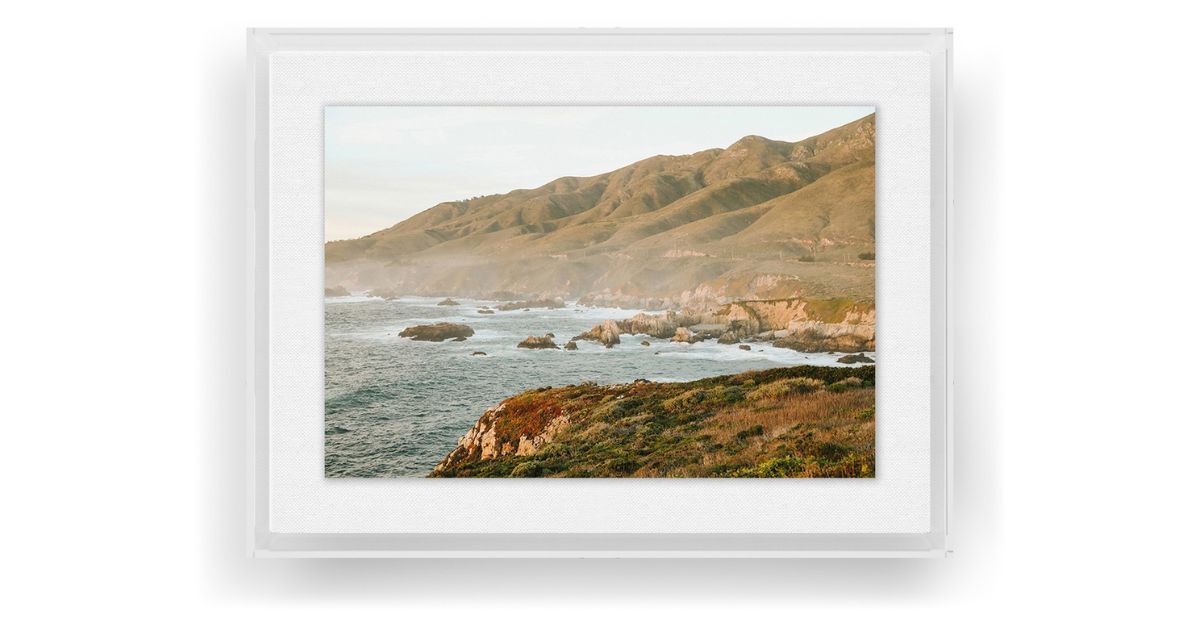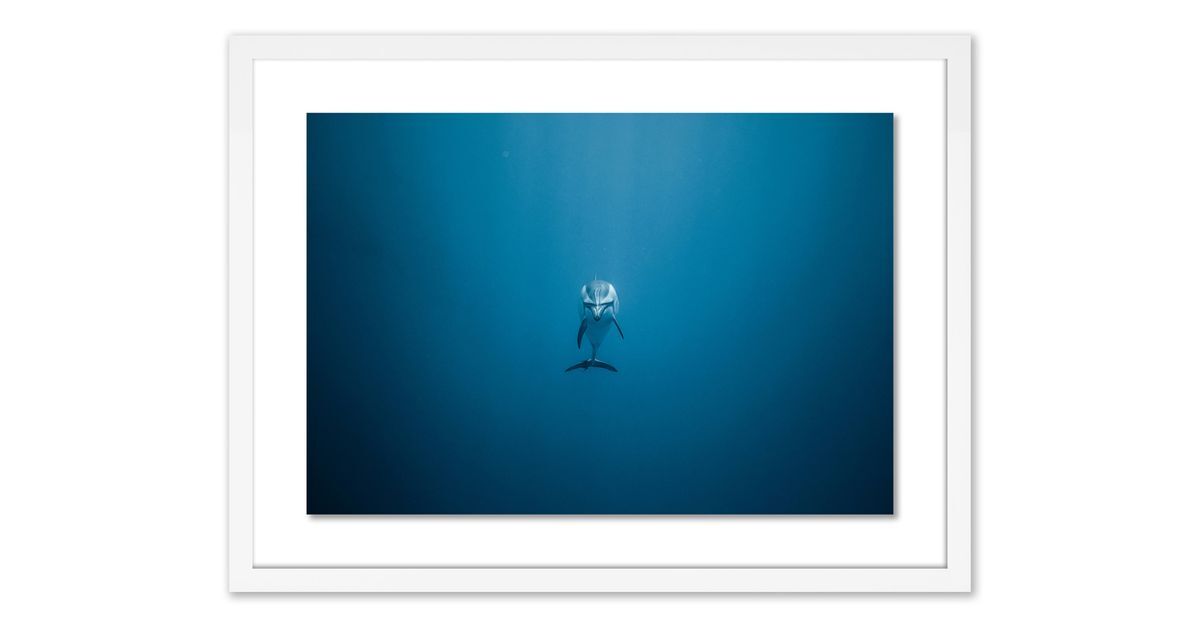One of the main benefits of having a gallery-style wall is that you can combine multiple mediums and styles to create a visual narrative that you can’t achieve with a single piece. Photography is a popular design foundation for mixed medium displays because it offers documentary precision and aesthetic appeal. While it may seem like they would clash, photography works surprisingly well with paintings and other prints to form dynamic elements of visual storytelling.
The juxtaposition of the photograph’s realistic representation and the most abstract elements of other mediums allows your gallery to offer multiple layers of meaning where literal concepts can mesh with abstract ideas. Knowing how to mix framed photography with other mediums can help you balance these elements with some technical knowledge and a strong understanding of spatial relationships, color theory, and narrative coherence.
Understanding Visual Weight and Balance
Photography’s natural realism brings visual weight to your collection that can draw the eye toward the photo instead of a surrounding piece. You can use that element to create a good sense of balance through placement and surrounding it with mediums that complement it. A painting with vibrant colors or bolder brushstrokes can balance the natural weight of the photograph, whereas delicate watercolor pieces may fade into the background.
How you frame a piece can also contribute to its visual presence. Ornate, wooden frames with intricate carvings or patterns naturally command more attention than a sleek, minimalist frame with neutral colors. Since the idea of your gallery is to make sure that no single element dominates the space, you want to keep the framing consistent between pieces.
Spacing and placement on the wall can guide the eye around your gallery like panels in a graphic novel, giving viewers a chance to carefully examine each piece in an organic, but intentional way. Large photographs can anchor smaller mixed-media pieces, while groupings of smaller photographs create rhythmic patterns that complement larger paintings.
Creating Thematic Connections Across Mediums
A helpful tip for integrating your pieces is finding threads or elements that they have in common despite their different artistic expressions or mediums. One of the broader relationships is through color, which can work, but isn’t as meaningful as something like subject matter. A black-and-white architectural photograph might complement an abstract sculpture that explores similar geometric forms, even when their creation methods differ dramatically.
Conceptual themes offer another powerful unifying element. You can express environmental concerns through landscape photography and give them added depth when pairing them with mixed-media pieces that depict natural materials. The photograph provides documentary context while the collage explores emotional and conceptual responses to the same subject matter.
A strong element of photography is that historical subject material can create a powerful starting point, and other pieces can highlight changes or evolution over time. Planning your gallery this way allows you to create a sense of continuity and transformation that approaches a subject chronologically and through different artistic expressions.

Mastering Color Harmony in Mixed Displays
While color works well for pairing pieces of different mediums together, you must have a general understanding of how dominant and subtle hues work within pieces. An advantage of photography is that you can get black-and-white prints that serve as a good neutral base, allowing you to surround them with colorful pieces. You could also have a monochromatic photograph of a restaurant and juxtapose it with a colorful painting of some of the dishes they serve. Try using warm and cool undertones to set the mood of the pieces and how paintings or other mediums can play with the photographs.
Contemporary digital photography often features saturated colors that can clash with traditional painting palettes. Consider the color temperature of photographic lighting when selecting companion pieces. Utilizing warm tones in your photography pairs well with earth-based paintings of forests or mountain ranges, while cool-toned images complement beaches, skylines, and similar subjects.
Incorporating Textural Contrasts
Another way to mix framed photography with other art mediums is to consider physical texture. Many photographic prints have a sleek, glossy texture, and that smooth surface can play off other mediums. Many oil paintings have visible brushstrokes or layers that create an extra dimension. The sense of stillness that comes from the smooth photograph is more apparent when you surround it with rougher, dimensional textures.
Matting choices within the photographic frames also contribute to textural relationships. Fabric mats, textured papers, or floating mounts change how the photograph relates to its frame and surrounding artworks. You can incorporate subtle modifications that strengthen the relationships between the different textures and how they play off one another.

Utilizing Scale Relationships Effectively
Dramatic scale differences create visual excitement and hierarchy within mixed-media arrangements. A large, framed photograph can serve as a backdrop for smaller, more intimate drawings or paintings of varying distances across the wall. This sense of scale creates a layered approach that gives the illusion of depth and presents openings for multiple viewing positions.
Grouping multiple smaller photographs creates collective visual weight that can balance larger individual artworks in other mediums. The rhythm the repeated photographic element creates provides stability that allows more experimental or abstract companion pieces to maintain their dynamic qualities without overwhelming the space.
Another option for presentation is to guide the viewer’s eye through progressive scale layouts. Viewers will naturally lock onto the largest piece and can organically glide to smaller, more detailed works. This process can also work in reverse by sorting your pieces from smallest to largest, creating a visual experience that serves to enhance the impact of a mixed-media gallery.
Exploring Abstract and Representational Partnerships
The partnership between photography’s inherent realism and abstract artistic expressions creates particularly compelling dialogues. The juxtaposition of photographic realism with abstract ideas allows viewers to make their own connections between the two ideas.
Surrounding portraits of people with abstract colors allows us to explore the human experience. The photograph captures a physical likeness, while the abstract pieces allow us to speculate about the subject’s emotional state or mental processes. These pairings invite viewers to consider multiple layers of human identity and experience.
Achieving Sophisticated Integration
We can achieve sophisticated integration through the potential combinations that stem from blending photography with other artistic mediums. Not every successful pairing needs additional elements, and overcrowding can diminish the impact of individual artworks.
Give your mind a chance to explore specific ideas and concepts with the full catalog at Wonderwall Studio. We have an exceptional range of photography art prints that pair well with abstracts, landscapes, and several other mediums to capture engaging ideas and enhance your gallery. Browse our curated collection to find the ideal blend of artistry and innovation and begin your mixed-media collection today.



